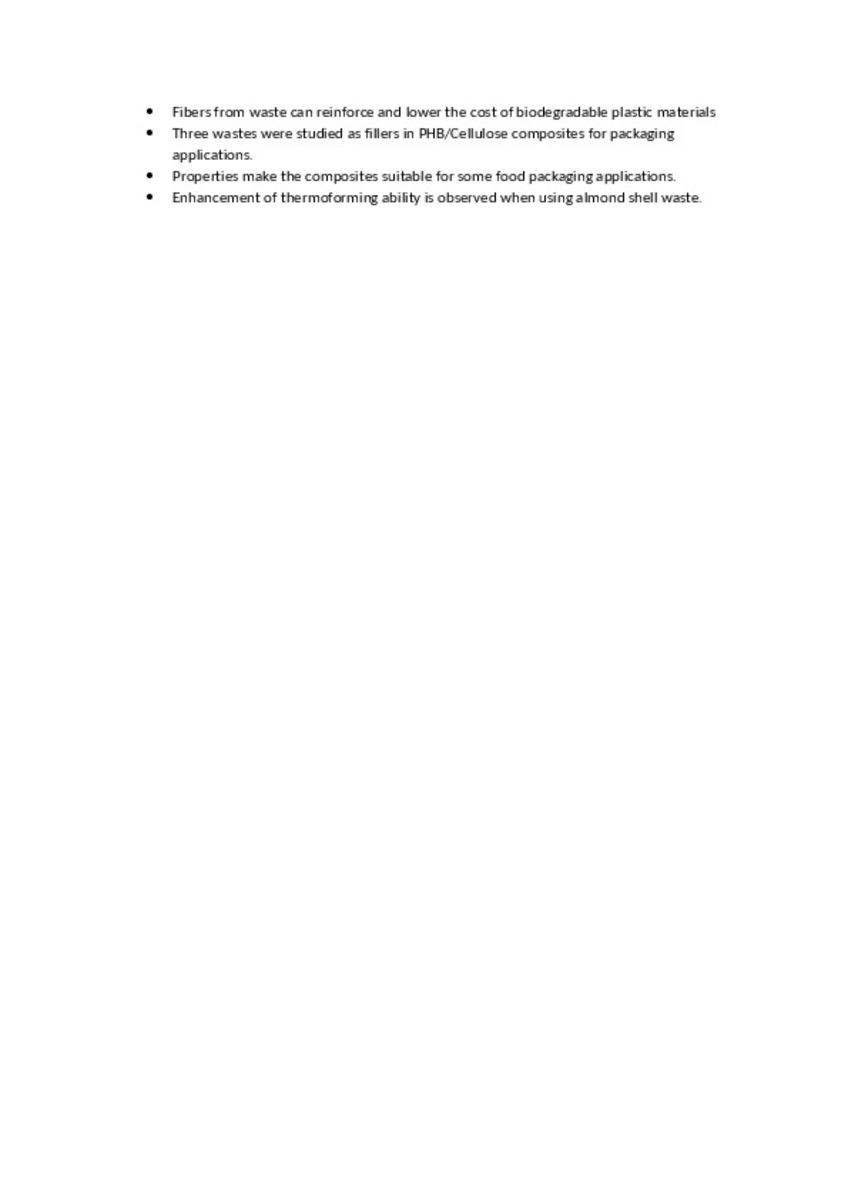Mostrar el registro sencillo del ítem
Biocomposites of different lignocellulosic wastes for sustainable food packaging applications
| dc.contributor.author | Sánchez-Safont, Estefanía | |
| dc.contributor.author | Aldureid, Abdulaziz | |
| dc.contributor.author | LAGARON, Jose | |
| dc.contributor.author | Gamez-Perez, Jose | |
| dc.contributor.author | Cabedo, Luis | |
| dc.date.accessioned | 2018-09-19T11:50:07Z | |
| dc.date.available | 2018-09-19T11:50:07Z | |
| dc.date.issued | 2018-07-15 | |
| dc.identifier.citation | SÁNCHEZ-SAFONT, Estefanía Lidón, et al. Biocomposites of different lignocellulosic wastes for sustainable food packaging applications. Composites Part B: Engineering, 2018, vol. 145, p. 215-225. | ca_CA |
| dc.identifier.issn | 1359-8368 | |
| dc.identifier.issn | 1879-1069 | |
| dc.identifier.uri | http://hdl.handle.net/10234/176159 | |
| dc.description.abstract | The suitability of three local lignocellulosic wastes i.e. almond shell (AS), rice husk (RH) and seagrass (SG) as fillers in PHB/Fiber composites applications has been studied. PHB/Fiber composites with 10 phr and 20 phr fiber content were prepared by melt blending. The influence of the fiber type (size, morphology and origin) and content on the morphological, mechanical and thermal properties of the as obtained composites has been assessed. To evaluate the potential use in food packaging applications, the barrier performance to water, thermoforming ability and disintegration in controlled composting conditions of the composites were also studied. All the fibers have demonstrated to be apt for their use as fillers in PHB/Fiber composites, showing a reinforcing effect without affecting the crystallinity and the disintegration rate of PHB. The thermal stability and the water barrier performance of the composites were reduced by the presence of the fibers. Nevertheless, the addition of AS resulted in the best balance of properties, in terms of permeability and mechanical properties, finding an enhancement of the thermoforming ability of PHB when 10 phr of AS was added. | ca_CA |
| dc.format.extent | 11 p. | ca_CA |
| dc.format.mimetype | application/pdf | ca_CA |
| dc.language.iso | eng | ca_CA |
| dc.publisher | Elsevier | ca_CA |
| dc.relation.isPartOf | Composites Part B: Engineering, 2018, vol. 145 | ca_CA |
| dc.rights | Copyright © Elsevier B.V. | ca_CA |
| dc.rights.uri | http://rightsstatements.org/vocab/InC/1.0/ | * |
| dc.subject | PHB | ca_CA |
| dc.subject | natural fiber | ca_CA |
| dc.subject | biodegradable | ca_CA |
| dc.subject | biocomposite | ca_CA |
| dc.subject | waste valorization | ca_CA |
| dc.title | Biocomposites of different lignocellulosic wastes for sustainable food packaging applications | ca_CA |
| dc.type | info:eu-repo/semantics/article | ca_CA |
| dc.identifier.doi | https://doi.org/10.1016/j.compositesb.2018.03.037 | |
| dc.relation.projectID | Ministerio de Economia y Competitividad / AGL2015-63855-C2-2-R; Pla de Promocio de la Investigacio de la Universitat Jaume I / UJI-B2016-35; H2020 EU Project YPACK / H2020-SFS-2017-1, 773872 | ca_CA |
| dc.rights.accessRights | info:eu-repo/semantics/openAccess | ca_CA |
| dc.relation.publisherVersion | https://www.sciencedirect.com/science/article/pii/S1359836818300738 | ca_CA |
| dc.contributor.funder | The authors also acknowledge the Unidad Asociada IATA-UJI "Polymer Technology". Authors would like to acknowledge Servicios Centrales de Instrumentacion (SCIC) of Universitat Jaume I for the use of FTIR, WAXS, TGA, DSC and SEM. We are also grateful to Raquel Oliver and Jose Ortega for experimental support. | ca_CA |
| dc.type.version | info:eu-repo/semantics/submittedVersion | ca_CA |
Ficheros en el ítem
Este ítem aparece en la(s) siguiente(s) colección(ones)
-
ESID_Articles [463]







